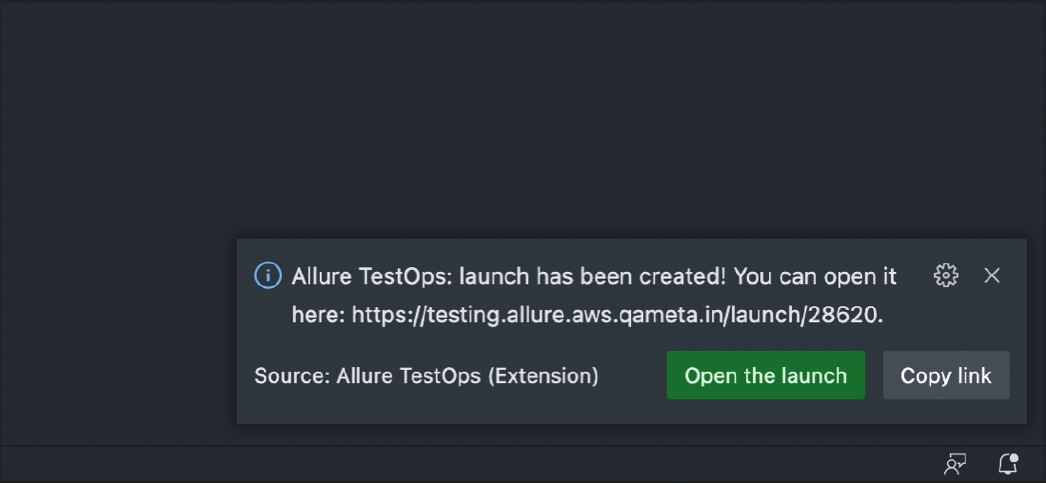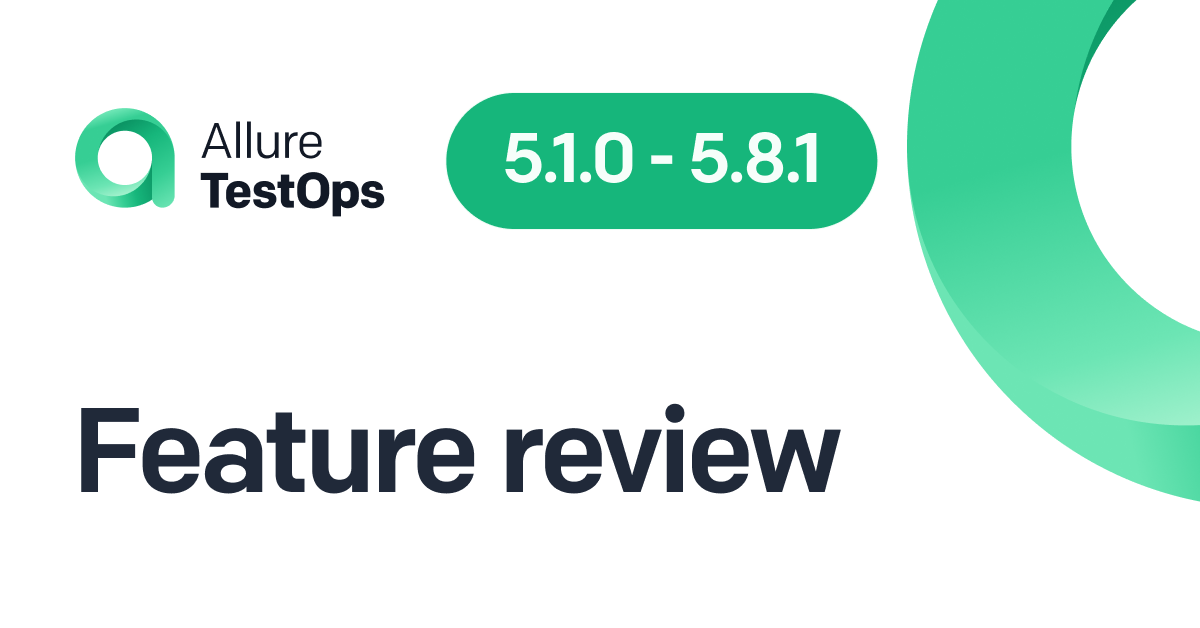There you are, running some tests at home right before making a commit. You just want to check something real quick, and don't want to bother your admin and plug into your CI. Spinning up an Allure Report to dig through the tests would be ideal. And if you're using IntelliJ IDEA, there is an excellent plugin that allows you to do it with just a few clicks. We know that it helped a lot of people, so now, we've made a similar plugin for VSCode. Here it is!
Allure Report features
First of all, the new plugin provides some new context actions. If you use them in the 'allure-results' directory, you'll be able to e. g. generate or serve a report. Without the context actions, you have to open your command line tool, 'cd' to the directory, look up the necessary commands, and also remember their syntax, parameters, etc. Now, the same can be done with a mouse click:

Another thing we've added is a separate tab where you can manage all active Report servers and see their URLs and ports. Without it, for multiple reports you'd have to open several terminal windows, then go through all the steps (change directory etc.) for each of the windows, and then juggle them as you're working. And of course, there's always the risk of closing the wrong terminal by mistake. The new tab makes it all a lot easier:
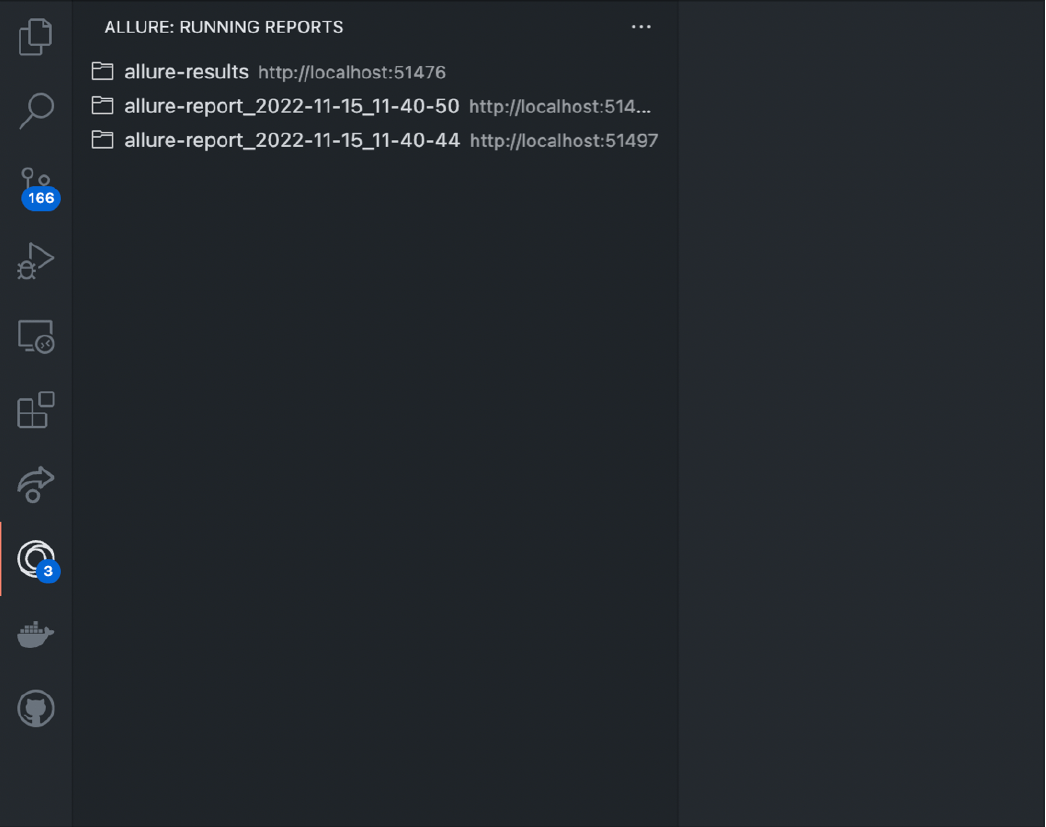
Allure TestOps features
The plugin provides some functionality for Allure TestOps as well. If you've got the license, don't forget to set up the required settings:
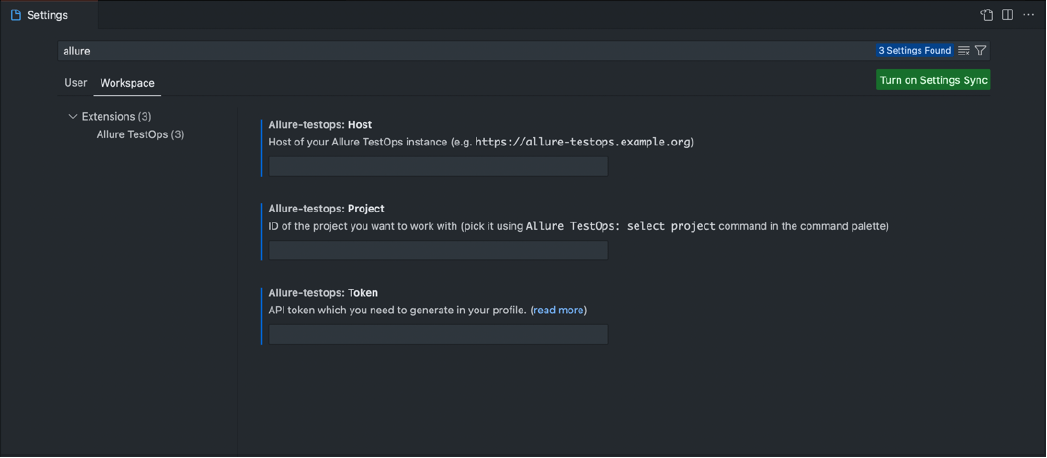
'Allure TestOps: test connection' will help you check your configuration, and 'Allure TestOps: select project' allows you to pick the project interactively. Then, you can create a new launch, uploading test results directly from your text editor:
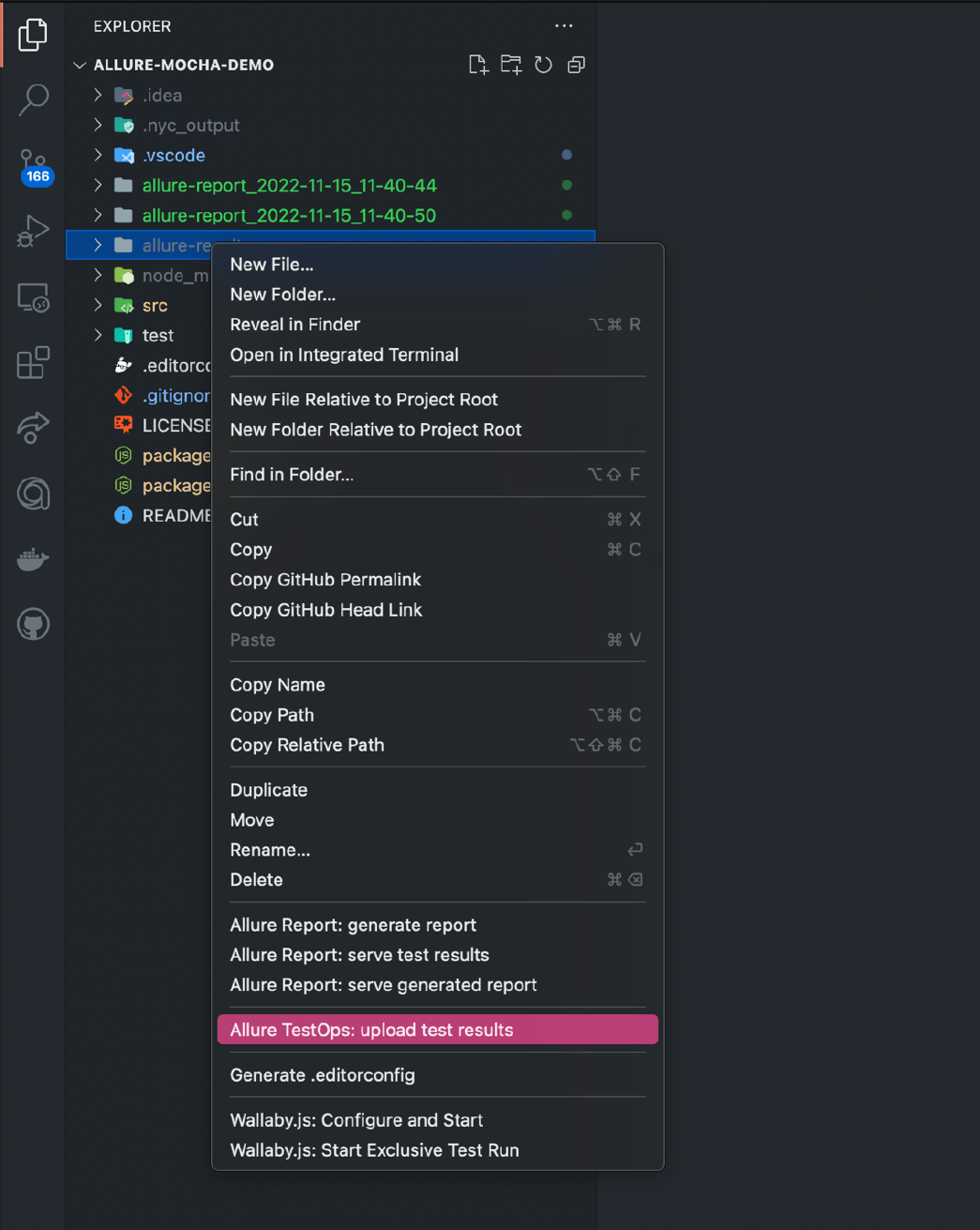
Without this plugin, you'd have to first archive your 'allure-results' directory, then open the Launches tab in Allure TestOps in your browser, drag and drop the archive and create a launch. Now, all of this is done with a single click. And once the launch is generated, you'll get a notification with a direct link to that launch in TestOps:
